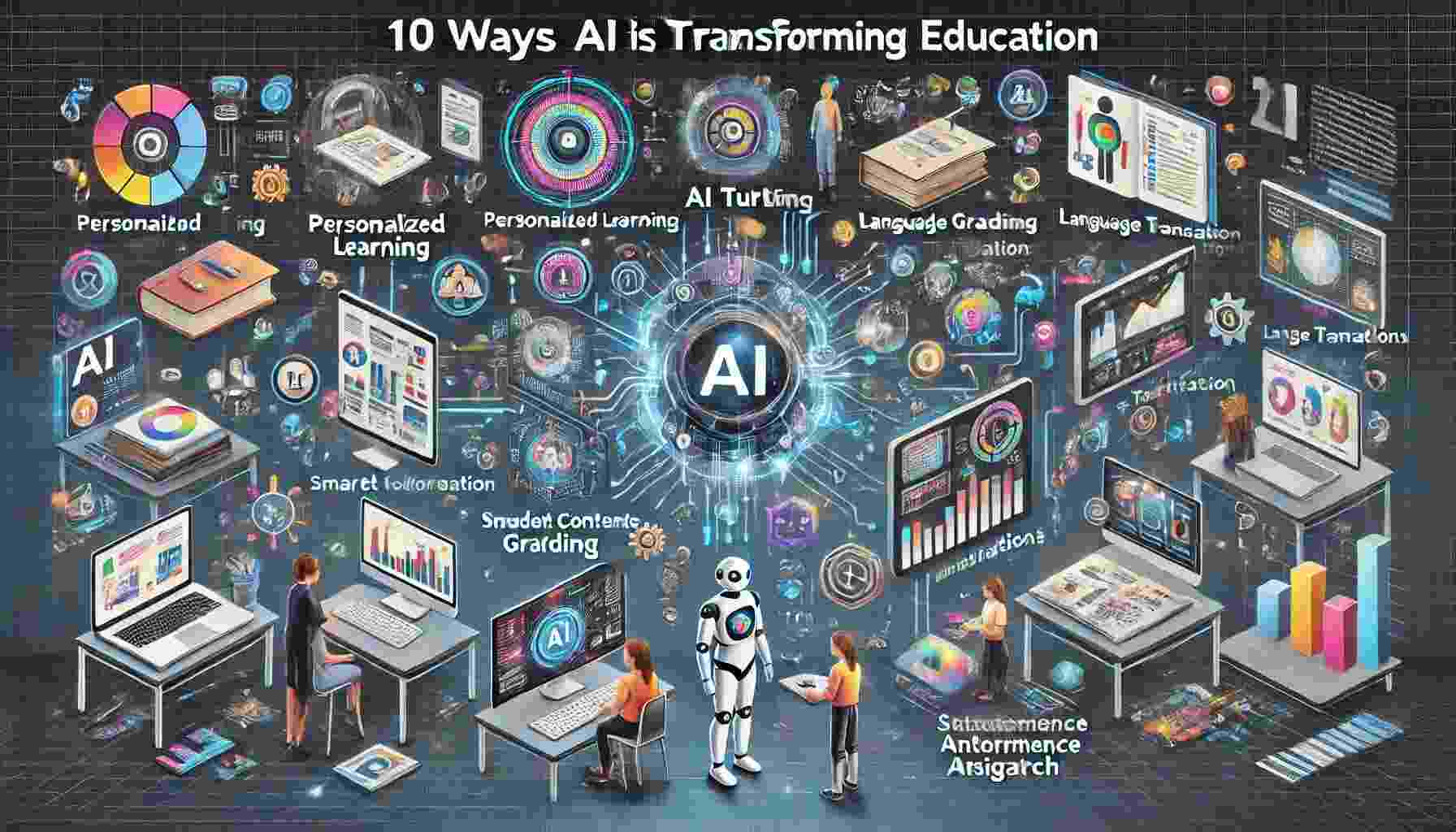Artificial intelligence (AI) transforms education by delivering improved learning outcomes while automation handles administration and opens educational opportunities for students throughout the globe. Modern teaching has experienced a transformation through AI-driven solutions which include personalized education and automatic grading and assessment. Education receives transformation through ten distinct ways in which AI brings modifications.
1. Personalized Learning Experiences
Education platforms with artificial intelligence functionality generate lessons that adjust instruction specifically to match individual student learning needs including style and learning velocity and personal choices. AI tools use student interaction analytics to match students with personalized educational material that includes custom tasks and studying schematics. By adapting the educational content through Carnegie Learning and Squirrel AI students can better understand challenging material.
2. Automated Grading & Instant Feedback
AI technology helps teachers streamline their workload through automated test grading for multiple-choice assessments alongside coding assignments and essay feedback analysis. The AI-powered tools Gradescope and Grammarly process student work through natural language processing (NLP) to generate immediate guidance for assignment assessment. Teachers can dedicate more time to delivering instruction because the system gives students immediate feedback so they can better understand the work.
3. AI-Powered Smart Tutoring Systems
Outside classroom boundaries AI tutoring systems function as tech-based tutors who supply individualized instructional support. The AI-powered assistants like Khan Academy’s AI tool and Socratic by Google provide students 24/7 access to explanations and personalized teaching based on their learning requirements. The technology enables students to learn at their personal pace while closing gaps in their knowledge foundation.
4. Students can interact effectively with learning platforms that use AI to adapt content delivery according to their needs.
Students benefit from adaptive learning platforms which employ AI technology to tailor lesson and quiz difficulty to match individual student achievement levels. The system provides supplementary understanding through additional teachings and workplace activities to students who face conceptual difficulties. Coursera together with Duolingo and Quizlet use AI technology to improve learning experiences which both capture students’ interest and deliver better results.
5. AI-Powered Chatbots for Student Support
AI-based chatbots assist students by offering quick responses to common queries and assignment directions and performing administrative work as needed. The academic entities within universities leverage AI-driven communications systems such as Ivy.ai together with AdmitHub programs to support students with both academic resources and course deadline management. The bots create improved communication paths between educational institutions and their students and simultaneously prevent administrative labor problems.
6. Data-Driven Insights for Educators
The analysis of student performance data through artificial intelligence enables educators to make better decisions. Predictive analytical systems help schools detect students who face academic difficulties so teachers can step in to avoid the problems from worsening. The insights from AI-powered dashboards help instructors understand student learning patterns so they can enhance their teaching methods and achieve better academic results.
7. Artificial Intelligence provides better access to educational resources for students who have disabilities.
Students with disabilities experience improved accessibility because of AI-driven assistive technology advancement. Students who have either vision or hearing disabilities can use text-to-speech software and speech-to-text functions provided by the technology. Through its tool Microsoft Immersive Reader students with dyslexia can customize font sizes while the system reads the content and simplifies text presentation. Online learning accessibility improves through AI technologies that detect sign language and deliver live subtitles.
8. AI-Enhanced Virtual & Augmented Reality Learning provides students with interactive educational experiences.
Virtual Reality (VR) and Augmented Reality (AR) powered by AI technologies allow subjects to become interactive life-like experiences which improve student engagement. AI simulation programs enable students to experience historical moments through virtual exploration as well as do virtual science labs or practice medical skills in secure virtual settings. Google Expeditions and ClassVR enable students to experience virtual learning opportunities that textbooks cannot parallel.
9. Academic Integrity & Plagiarism Detection
The detection of academic dishonesty in student work becomes possible because AI tools enforce academic integrity through the identification of plagiarism and trickery. AI algorithms running on Turnitin Copyscape and Grammarly detect plagiarism along with offering suggestions for enhancement. These professional tools help educational institutions maintain ethical standards and provide their students with writing practice guidance.
10. AI-Directed Language Translation Join Forces With Learning Assistance Systems
AI translation services allow students who speak multiple languages to read educational materials in their mother tongue. Students can benefit from language barrier elimination through translation tools including Microsoft Translator and Google Translate and DeepL so they can work together across international borders. Duolingo benefits from AI through its ability to adapt language education methods according to the students’ educational advancement and skill levels.
Final Thoughts
Artificial Intelligence transforms education because it creates customized learning experiences while broadening accessibility and reducing implementation time. AI-based tools both enable students and teaching staff through personalized learning models which improve education results and educational participation. AI’s ongoing development will progressively expand its educational influence which will establish new learning methods people cannot currently predict.
